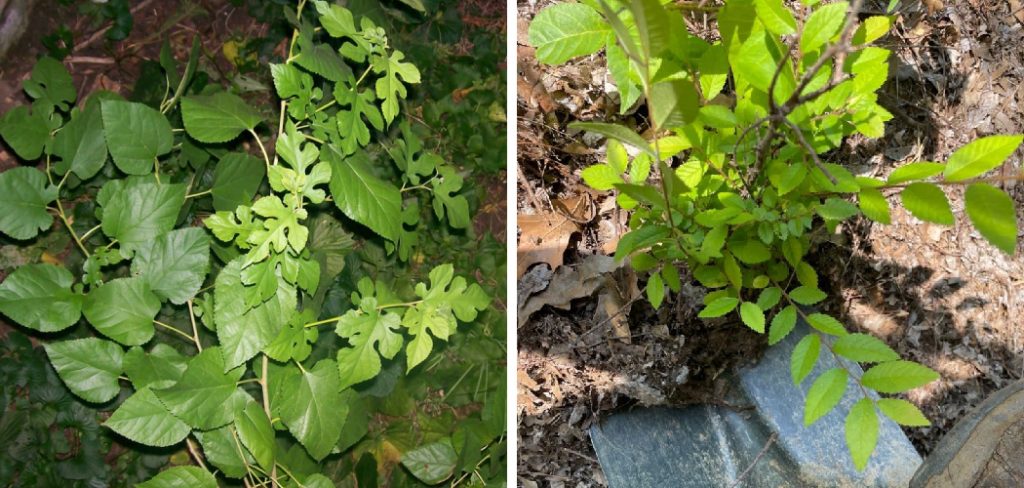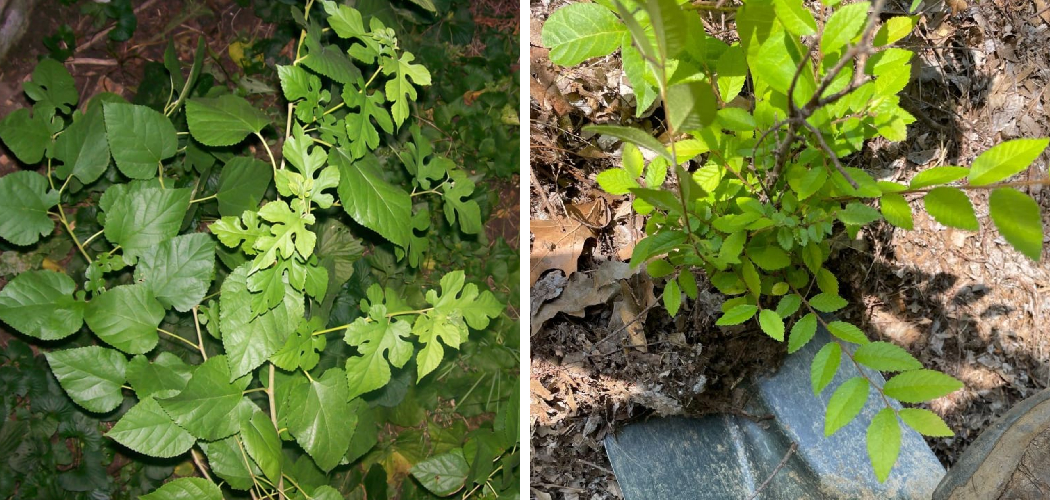Chop or dig out volunteer trees manually to kill them effectively. Volunteer trees, also known as weed trees or self-seeded trees, can quickly become a nuisance in gardens and yards.
These trees grow from seeds that have been dispersed by wind, birds, or other means, often popping up in unwanted areas. While some may find the presence of volunteer trees appealing, others may see them as invasive and a threat to the overall aesthetics of their landscaping.
Getting rid of these trees involves identifying the unwanted saplings and implementing effective removal techniques. We will explore various methods to kill volunteer trees and prevent their regrowth, ensuring a well-maintained and tidy garden or yard space.

What Are Volunteer Trees?
Volunteer trees are those that grow naturally in an area without any human intervention. These trees may sprout from seeds dispersed by wind, birds, or other means. Common species of volunteer trees include oak, maple, pine, and birch. It is important to understand the definition and explanation of volunteer trees to effectively deal with them.
These trees can quickly establish themselves and compete with desired plants for resources. To kill volunteer trees, it is necessary to identify them early and take appropriate measures. This may involve cutting them down, digging out the roots, or using herbicides.
It is crucial to remove volunteer trees promptly to prevent them from becoming invasive and causing harm to the ecosystem. Managing volunteer trees is an essential task for maintaining the aesthetics and health of a garden or landscape.
Problems Caused By Volunteer Trees
Volunteer trees can pose a range of problems, causing negative impacts on native plants and ecosystems. These trees, not intentionally planted, often outcompete native species for resources, leading to a decrease in biodiversity. Moreover, they can disrupt the natural balance and alter ecosystems.
In addition, volunteer trees can pose risks to infrastructure and property. Their roots may invade foundations, driveways, and other structures, leading to costly damages. Furthermore, these trees can overshadow and outgrow desired plants and flowers in gardens, rendering landscaping efforts ineffective.
Gardeners and landscapers must be aware of the implications of volunteer trees and take proactive measures to control and eliminate them before they cause further harm. By addressing the problems caused by volunteer trees, we can maintain healthier ecosystems, protect our properties, and foster the growth of desired plants.
How to Kill Volunteer Trees: Step by Step Guide
Manual Removal
Manual removal of volunteer trees involves several steps. The first step is to identify and assess the trees present on the property. This includes determining the species of the trees and evaluating their potential impact on the surrounding area. Once the trees have been identified, the next step is to cut them down carefully, making sure to remove as much of the root system as possible.
It’s essential to dispose of the cut trees properly, either by chipping or hauling them away. To prevent regrowth, it may be necessary to apply herbicides to the stumps or use physical barriers to deter new sprouts. Regular monitoring and maintenance are crucial to ensure that volunteer trees do not reemerge and cause future problems.
By following these steps, you can effectively kill and manage volunteer trees on your property.
Chemical Control
Volunteer trees can be effectively eradicated through chemical control using appropriate herbicides. Selecting the right herbicide is crucial to ensure success. It is essential to apply herbicides correctly for optimal outcomes. This involves following instructions carefully and considering factors such as the timing and method of application.
Safety precautions should always be taken when handling herbicides to protect yourself and the environment. Wearing protective clothing, gloves, and goggles is recommended. Ensure that herbicides are stored securely and kept out of reach of children and pets. Additionally, it is important to consider the environmental impact of herbicides and choose products that are environmentally friendly whenever possible.
By adhering to these guidelines, volunteer trees can be effectively eliminated, improving the aesthetics and health of your landscape.
Mechanical Control
Mechanical control is an effective technique for killing volunteer trees. To successfully remove these unwanted trees, you need the right equipment and tools. Chainsaws, handsaws, and tree pruners are commonly used for mechanical removal. They allow you to cut through the trunk or branches of the tree.
However, it’s important to consider the pros and cons of this method. On the positive side, mechanical control offers immediate results and is suitable for larger trees. On the other hand, it can be physically demanding and may require more effort compared to other methods.
Additionally, there is a risk of injury if proper precautions are not taken. Despite its limitations, mechanical control remains a popular choice for homeowners and landowners seeking to eliminate volunteer trees effectively.
Preventing Volunteer Trees
Volunteer trees can be a nuisance in maintaining a weed-free landscape. Understanding seed dispersal and germination is key to preventing their growth. Strategies to halt seed germination are effective in stopping volunteer trees from sprouting. It is crucial to keep the landscape free from weeds to maintain control over unwanted seedlings.
Consistently removing unwanted plants and regularly monitoring the area can help prevent the growth of volunteer trees. Vigilance is essential, as even a few missed seeds can result in a new generation of volunteer trees. By implementing these strategies, you can successfully kill volunteer trees and maintain a well-manicured landscape without their interference.
Frequently Asked Questions Of How To Kill Volunteer Trees
How Do I Keep My Volunteer Tree From Growing Back?
To prevent regrowth, regularly cut off the shoots of your volunteer tree at ground level.
How Do You Kill Unwanted Tree Saplings?
To kill unwanted tree saplings, carefully follow these steps: 1. Cut the sapling as close to the ground as possible using sharp garden shears. 2. Apply herbicide directly to the cut stump to prevent regrowth. 3. Monitor the area for any new saplings and repeat the process if necessary.
4. Always ensure to use herbicides safely and according to the manufacturer’s instructions.
How Do I Get Rid Of Unwanted Trees?
To get rid of unwanted trees, follow these steps: 1. Assess the tree and determine if it can be removed safely. 2. Hire a professional tree removal service to ensure the job is done correctly. 3. Obtain any necessary permits or permissions from local authorities.
4. Once the tree is removed, consider options for disposal or repurposing the wood.
Will Vinegar Kill Tree Roots?
Yes, vinegar can kill tree roots due to its acidic properties.
Conclusion
Killing volunteer trees requires a strategic approach and consistent effort. By understanding the root causes of tree growth and implementing effective methods, you can successfully remove these unwanted plants from your property. Start by identifying the type of tree and its growth pattern to determine the most suitable method of removal, whether it be manual or chemical-based.
Regular monitoring and maintenance are crucial to prevent re-growth and ensure long-lasting results. Additionally, proper disposal of the removed trees is essential to prevent the spreading of seeds and further propagation. Remember to prioritize safety when using chemicals or cutting down trees, and consider seeking professional help if needed.
With determination and the right techniques, you can effectively eliminate volunteer trees and maintain a healthy and aesthetically pleasing environment.

